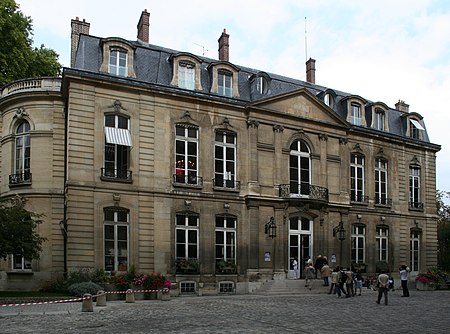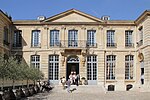Hôtel de Villeroy (Paris, 7th arrondissement)
Buildings and structures in the 7th arrondissement of Paris

The Hôtel de Villeroy is an 18th-century building in Paris, built on the initiative of Antoine Hogguer of Saint-Gall, Baron de Presles for his mistress, the actress Charlotte Desmares.
Excerpt from the Wikipedia article Hôtel de Villeroy (Paris, 7th arrondissement) (License: CC BY-SA 3.0, Authors, Images).Hôtel de Villeroy (Paris, 7th arrondissement)
Cité Martignac, Paris Faubourg Saint-Germain (Paris)
Geographical coordinates (GPS) Address Nearby Places Show on map
Geographical coordinates (GPS)
| Latitude | Longitude |
|---|---|
| N 48.855611111111 ° | E 2.3180555555556 ° |
Address
Ministère de l'Agriculture et de l'Alimentation
Cité Martignac
75007 Paris, Faubourg Saint-Germain (Paris)
Ile-de-France, France
Open on Google Maps











